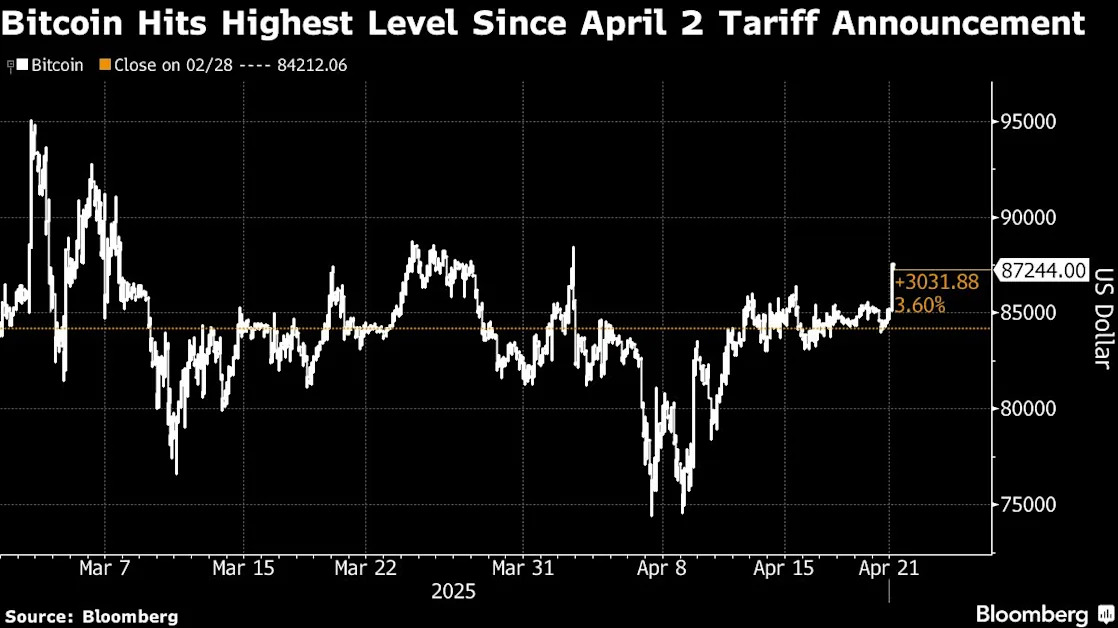The tech industry has long been dominated by a specific archetype — the tech bro. In Web2, these were the hoodie-wearing disruptors of Silicon Valley, hell-bent on moving fast and breaking things.
In Web3, the ethos has changed, but the personalities haven’t entirely disappeared. The industry is still full of young, aggressive, ambitious figures shaping the future of technology, but they’re operating in a fundamentally different ecosystem.
According to Charles Hoskinson, founder of Cardano, this is simply a natural progression of power.
“Remember, all those Web2 tech bros started poor. They didn’t have any money or status. Now they’re the richest, most powerful people in the world. Crypto bros are just one or two cycles behind.”
But what exactly has changed? And how do Web3’s tech leaders compare to their Web2 predecessors?
Web2 tech bros: The birth of the digital elite
The Web2 tech bro was born in the dot-com boom and came of age in the social media revolution. They built companies like Facebook, Uber, Twitter, and Google—platforms that reshaped the internet but also consolidated power in the hands of a few.
The Web2 era gave rise to dominant figures who built companies like Facebook, Uber, Twitter, and Google—platforms that reshaped the internet while consolidating power in the hands of a few.
These founders thrived on a monopolistic mindset, seeking to dominate industries through sheer scale and aggressive acquisition tactics. Their motto— "Move fast and break things" — prioritized disruption over regulation, leaving oversight as an afterthought.
The Web2 ecosystem was tightly controlled by venture capitalists, Stanford graduates, and ex-Googlers, fostering an exclusive "Silicon Valley club" mentality where access to capital determined success.
Ironically, despite their supposed countercultural roots, Web2 tech bros ended up aligning with governments, Wall Street, and regulators as their companies became too big to fail. The disruptors became the establishment.
Web3 tech bros: Decentralized, chaotic, and ideological
Web3 emerged as a reaction to the excesses of Web2— a rebellion against big tech. Instead of centralized platforms, Web3 promises decentralized networks, financial sovereignty, and privacy-first solutions.
While Web2 leaders built empires on centralized platforms, Web3 leaders champion community-driven models, leveraging token economies, DAOs, and grassroots funding. The structure is chaotic, with competing blockchains, fragmented governance, and ideological divides.
Yet, Web3’s power struggles mirror those of Web2. Tribalism is rampant — Ethereum vs. Cardano, Bitcoin maximalists vs. altcoin advocates, centralized exchanges vs. DeFi purists.
That said, Web3’s tech bros aren’t immune to the same power struggles and drama that plagued Web2. In-fighting is rampant—between Ethereum and Cardano, Bitcoin maximalists and altcoin advocates, centralized exchanges and DeFi purists.
As Hoskinson puts it, “Web3 is no different. We just haven’t quite penetrated the zeitgeist in the same way yet, but we will. And there’ll be an Ethereum movie, and I’m sure they’ll get some schlump to play me.”
Jay Boisvert, CEO of the new ‘play-nice’ social media platform Wunder believes the success of Web3 will ultimately hinge on its ability to scale, and scale is achieved by earning the trust of end users.
“As confidence in traditional institutions continues to erode, Web3 has a unique opportunity to step in, but it must become more visible and open to scrutiny. The core principles of Web3, rooted in ideology and transparency, provide a foundation for building fairer, more verified, and authentic communities, communities like Wunder," he says.
The big question
While Web3 markets itself as a more ethical, decentralized alternative to Web2, some critics argue it's repeating the same mistakes. Instead of Zuckerberg-style monopolies, Web3 has a new class of oligarchs – Early crypto adopters hold disproportionate amounts of power through VC-backed blockchains and billion-dollar treasuries.
Pump-and-dump culture — many Web3 projects rely on hype, celebrity endorsements, and retail speculation rather than real-world adoption. Regulatory evasion instead of innovation – Rather than lobbying for clear rules, many Web3 founders prefer offshore jurisdictions to avoid compliance altogether.
However, there are fundamental differences that suggest Web3 could evolve in a more equitable direction: Smart contracts replace middlemen – unlike Web2, which centralized control, Web3 automates transactions on-chain, reducing corporate power.
Open-source ethos — many Web3 projects are built in public, with permissionless access — a stark contrast to Web2’s closed systems. Tokenized incentives – users can own parts of protocols through governance tokens, unlike Web2’s “you are the product” model.
Web2 vs. Web3: The future of tech leadership
The transition from Web2 to Web3 is more than just a technical evolution — it’s a cultural revolution. In the traditionally male-dominated tech space, we are beginning to witness the emergence of a more inclusive "tech-gal" culture that is reshaping the way companies are built, scaled, and measured for success.
Women founders, engineers, and thought leaders are stepping into pivotal roles, pushing the narrative beyond profit-driven KPIs toward sustainable and value-driven growth models. This shift is crucial because, as history has shown us, the integrity of the metrics companies chase is directly tied to the culture behind them.
Lisa Loud, executive director of Secret Network Foundation sees the collapse of FTX as a cautionary tale. Its downfall wasn’t solely due to bad investments or poor financial planning—it was rooted in a work culture that prioritized hitting arbitrary financial metrics over values like transparency, accountability, and ethical decision-making.
“When you strip away those values, you’re left with a house of cards ready to fall at the slightest disruption. What the FTX case exemplifies is that a toxic, short-term “win-at-all-costs” mentality isn’t just a risk—it’s a recipe for disaster,” she says.
Web3 is giving us the opportunity to do things differently. One of the key innovations driving this shift is the power of community input. Unlike the Web2 era — where tech giants like Facebook, Google, and Twitter could make sweeping decisions based solely on shareholder profit — Web3 empowers its communities.
With decentralized governance models, token holders and users can directly shape the future of platforms. Founders no longer have the luxury of making decisions in a vacuum. Instead, they are encouraged — if not required — to interact with users through transparent, real-time feedback loops on platforms like X (formerly Twitter) and Discord.
This dynamic is fostering a healthier balance of power between companies and their communities. The Web3 model, in its ideal form, encourages decision-making that considers long-term impact and user trust rather than just quarterly earnings. For founders — especially women who are breaking barriers in this space—this represents a paradigm shift.
“We’re not just building companies; we’re co-creating ecosystems where success is measured not only by profitability but by community satisfaction, ethical governance, and genuine innovation,” says Loud.
So we can agree that the Web2’s titans—Zuckerberg, Musk, Bezos, Page—are deeply entrenched in global power structures. Meanwhile, Web3’s biggest figures—Vitalik Buterin, Hoskinson, Changpeng Zhao, Anatoly Yakovenko—are still battling for legitimacy.
But as Web3 grows, it faces the same challenge Web2 did: what happens when rebels become the establishment?
Hoskinson believes that Web3’s moment in the sun is inevitable. “Crypto bros are not too far behind. We’re just one or two cycles behind the Web2 guys.”
The big question is: will Web3 actually remain decentralized, or will it simply produce new tech overlords wearing different hoodies?
Disclaimer: The views and opinions expressed in this article are solely those of the author and do not necessarily reflect the views of TheStreet Crypto. This piece is for informational purposes only and should not be considered financial or investment advice.





